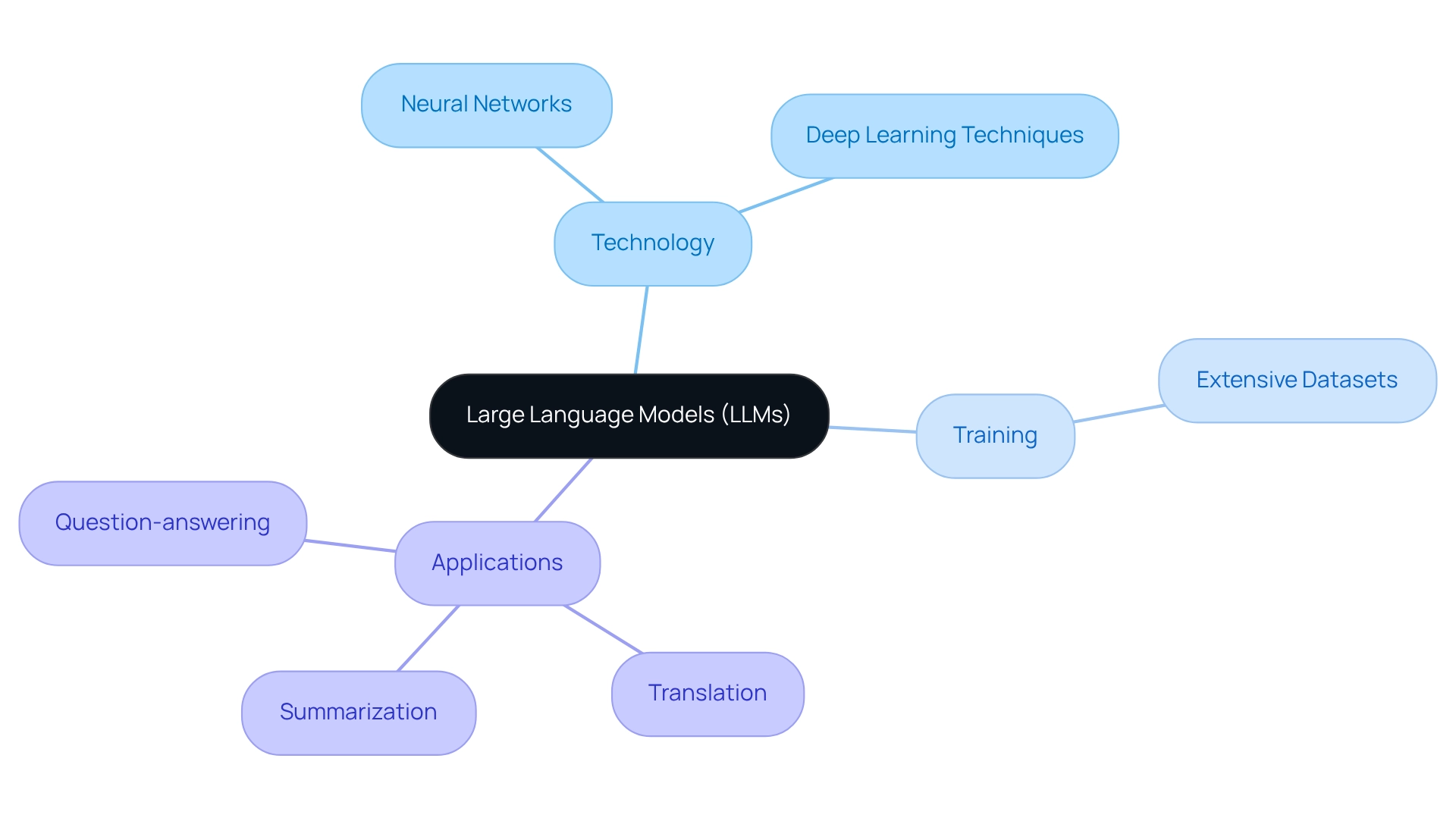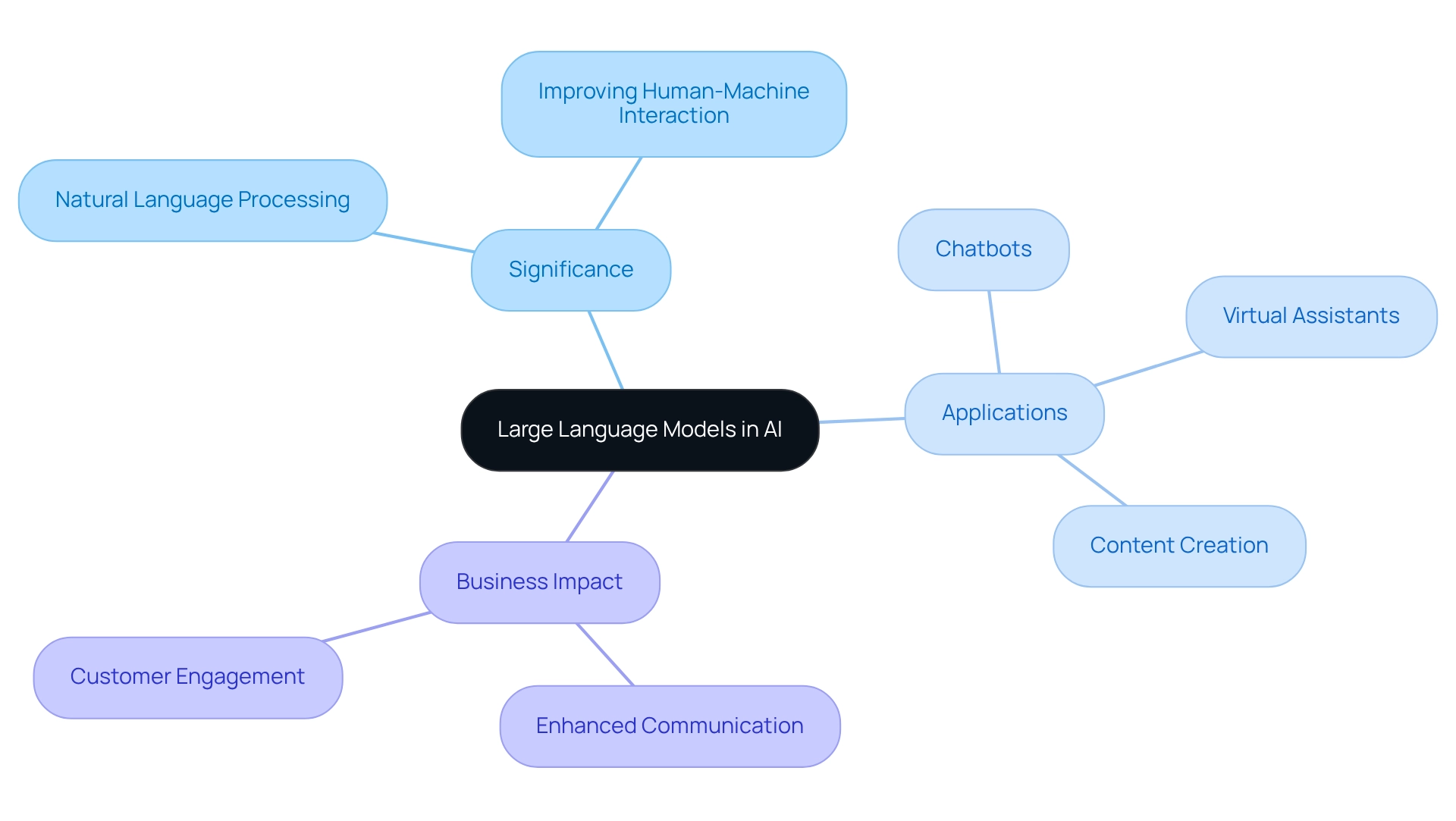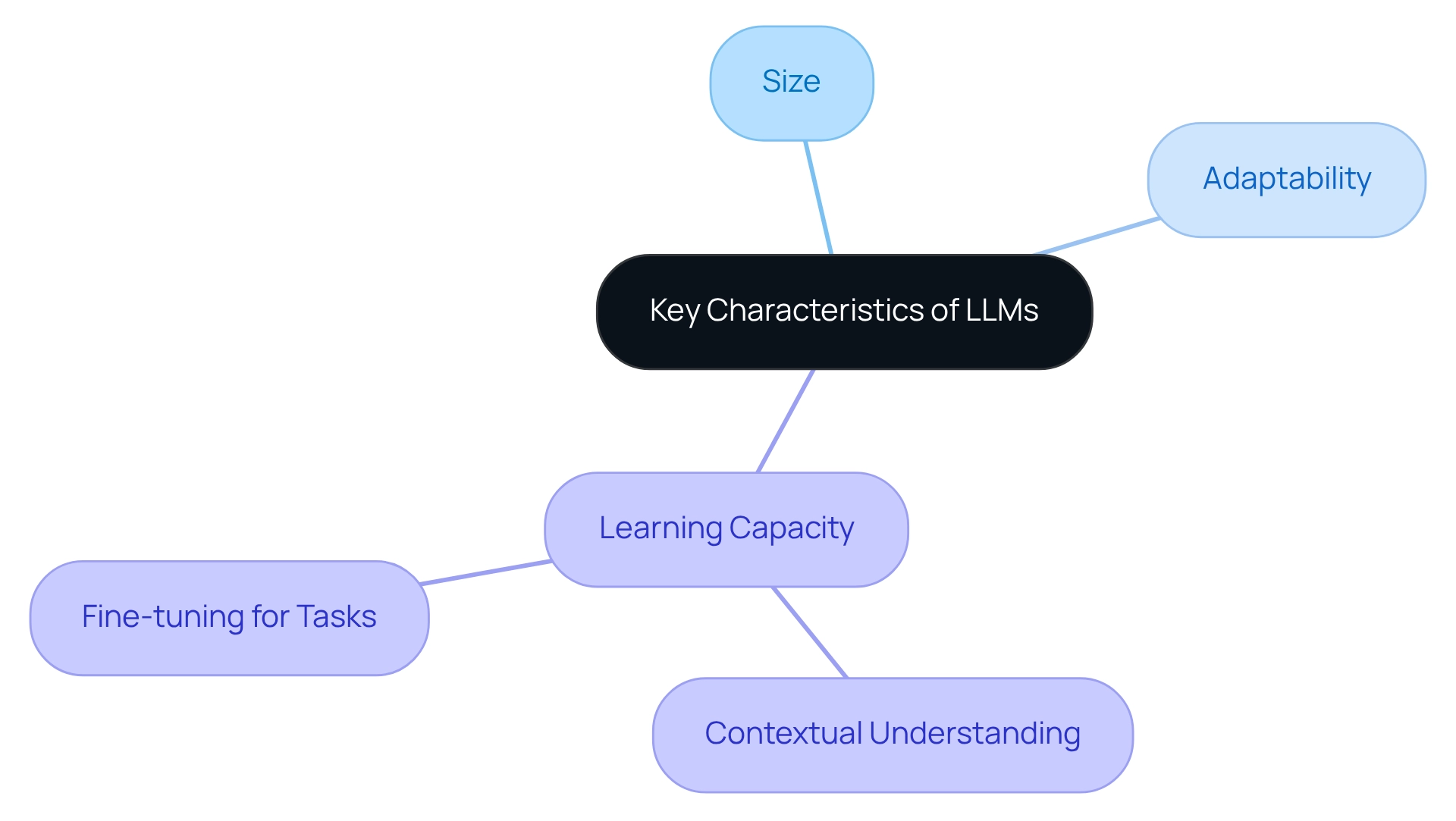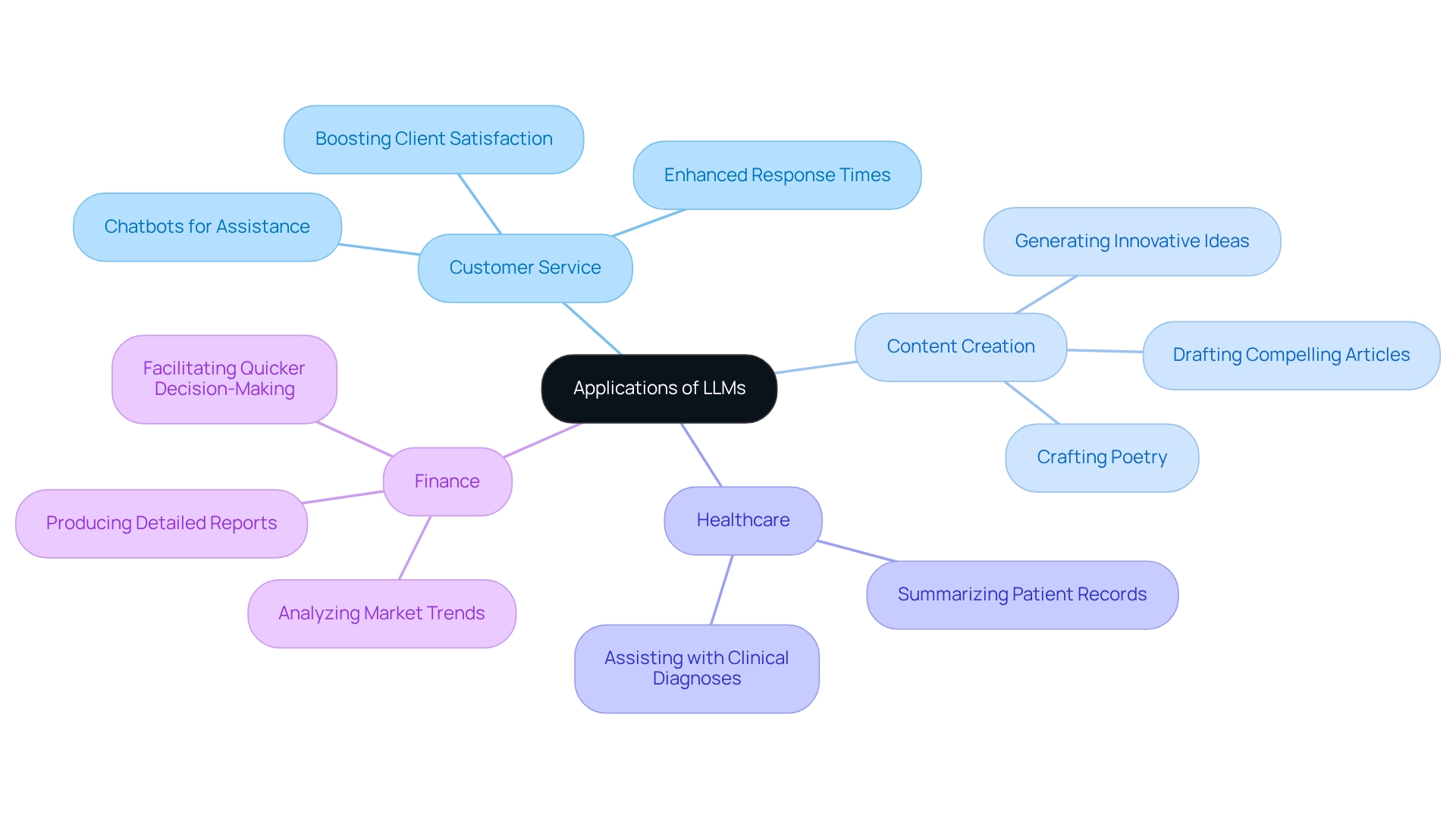
LLM Meaning: Understanding Large Language Models in AI
GeneralKey Highlights:
- Large Language Models (LLMs) are advanced machine learning systems designed to understand, produce, and transform human communication using deep learning techniques.
- LLMs excel in various natural language processing tasks, such as translation, summarization, and question-answering.
- The rise of LLMs is driven by the need for automated systems that can comprehend and generate human language, crucial for applications like chatbots and virtual assistants.
- The evolution of LLMs began with rule-based systems and statistical methods, advancing significantly with the introduction of neural networks and transformer architecture.
- Key features of LLMs include their size, adaptability, and ability to learn from context, allowing them to generate coherent and relevant responses.
- LLMs have transformative applications in sectors such as customer service, content creation, healthcare, and finance, enhancing efficiency and user experiences.
- Embracing LLMs is essential for businesses to thrive in a digital landscape, as they can significantly improve communication strategies and operational effectiveness.
Introduction
In the rapidly evolving landscape of artificial intelligence, Large Language Models (LLMs) emerge as groundbreaking innovations that are fundamentally reshaping human-computer interaction. These advanced machine learning systems not only comprehend and generate human language but also execute a myriad of natural language processing tasks with remarkable accuracy.
As businesses increasingly strive to enhance communication and streamline operations, LLMs have become indispensable tools, fueling everything from chatbots to content generation.
This article delves into the intricacies of LLMs, tracing their evolution, identifying their key characteristics, and examining their transformative applications across various industries.
Define Large Language Models (LLMs)
Large Neural Networks represent the pinnacle of sophisticated machine learning systems, meticulously engineered to comprehend, produce, and transform human communication. These systems leverage deep learning techniques, particularly neural networks, and are trained on extensive datasets that encompass a wide array of text sources. This rigorous training empowers large language models to grasp context, semantics, and syntax, enabling them to generate coherent and contextually relevant text.
The defining characteristic of large models lies in their ability to perform a multitude of natural language processing tasks, such as:
- Translation
- Summarization
- Question-answering
This adaptability positions them as invaluable tools within the realm of artificial intelligence, ready to meet the evolving demands of the industry.

Contextualize LLMs in Artificial Intelligence
Large models represent a pivotal category of artificial intelligence, specifically focused on natural language processing (NLP). This advancement marks a significant leap in AI capabilities, empowering machines to engage with humans in a more natural and intuitive manner. The surge in large language models, or llm meaning, is driven by the escalating demand for automated systems capable of understanding and generating human language—an essential requirement for applications such as chatbots, virtual assistants, and content creation tools.
Agentics harnesses the power of large language models within its voice AI solutions, enhancing business communication and enabling organisations to streamline operations while improving customer engagement. As companies strive to elevate these interactions, large language models have emerged as indispensable components of the AI toolkit, facilitating more effective communication and engagement.
In conclusion, embracing large language models is not merely an option but a necessity for businesses aiming to thrive in an increasingly digital landscape. The integration of these advanced AI solutions can transform communication strategies, driving greater efficiency and customer satisfaction.

Trace the Evolution of LLMs
The evolution of large-scale systems is intrinsically linked to the foundational era of natural communication processing, characterised by rule-based systems and statistical methods. The advent of neural networks in the 2000s marked a pivotal shift, leading to the development of more sophisticated systems. The introduction of transformer architecture in 2017, exemplified by models such as BERT and GPT, revolutionised the landscape by enabling advanced language processing techniques that significantly enhance efficiency in handling language.
These models leverage self-attention mechanisms, which allow them to consider the interrelationships among words, resulting in improved comprehension and generation of text. Today, the llm meaning is reflected in the continuous evolution of large language models, with ongoing research dedicated to amplifying their capabilities and addressing critical challenges, including bias and interpretability.
The journey of these technologies not only showcases their potential but also underscores the importance of further exploration and innovation in this dynamic field.

Identify Key Characteristics of LLMs
The essential features of large language models, or LLM meaning, are their size, adaptability, and capacity to learn from surrounding information. Trained on billions of parameters, these models capture intricate patterns in language, showcasing their versatility across a wide range of tasks—from generating creative content to answering complex questions. Their ability to grasp context is paramount, as it relates to the LLM meaning, enabling them to produce coherent and pertinent responses. This capability is particularly evident in applications like chatbots, where large language models engage in meaningful dialogues by understanding user input and generating suitable responses. Additionally, these models can be fine-tuned for specific tasks, significantly enhancing their performance in targeted applications. The implications of these features are profound, presenting opportunities for businesses to leverage AI solutions that not only meet but exceed their operational needs.

Examine Real-World Applications of LLMs
Large language models (LLMs) have emerged as transformative tools across various sectors, illustrating the LLM meaning by fundamentally changing how companies operate and interact with clients. In the realm of customer service, LLMs power chatbots that deliver immediate assistance, significantly enhancing response times and boosting client satisfaction. When it comes to content creation, these models support writers by generating innovative ideas, drafting compelling articles, and even crafting poetry. Additionally, in healthcare, LLMs play a crucial role in summarising patient records and assisting with clinical diagnoses. In the finance sector, they analyse market trends and produce detailed reports, facilitating quicker decision-making processes. As organisations continue to explore novel applications of LLMs, understanding the LLM meaning expands, driving efficiency and enriching user experiences. The potential of LLMs is vast—embracing their capabilities is not just an option; it is a necessity for those aiming to thrive in a competitive landscape.

Conclusion
The exploration of Large Language Models (LLMs) underscores their profound impact on artificial intelligence and natural language processing. Defined as advanced machine learning models adept at understanding and generating human language, LLMs have undergone significant evolution, particularly with the advent of neural networks and transformer architecture. This transformation has revolutionised how machines engage with humans.
Key characteristics such as scalability, versatility, and contextual understanding highlight their utility across diverse applications. Businesses increasingly leverage LLMs to enhance communication, improve customer service, and streamline operations, showcasing their indispensable role in modern technology.
As LLMs continue to advance, their potential applications are set to expand, driving innovation across industries. Ongoing research addressing challenges related to bias and interpretability will further enhance their effectiveness and reliability. Embracing LLMs paves the way for more intuitive and efficient human-computer interactions, shaping a future where technology seamlessly integrates into everyday communication and decision-making processes. The time to harness the power of LLMs is now, as they represent a pivotal advancement in our technological landscape.
Frequently Asked Questions
What are large language models (LLMs)?
Large language models are sophisticated machine learning systems designed to understand, produce, and transform human communication. They utilise deep learning techniques, particularly neural networks, and are trained on extensive datasets containing a variety of text sources.
What tasks can large language models perform?
Large language models can perform several natural language processing tasks, including translation, summarisation, and question-answering.
How do large language models relate to artificial intelligence?
Large language models are a crucial category of artificial intelligence focused on natural language processing (NLP). They represent a significant advancement in AI capabilities, allowing machines to interact with humans in a more natural and intuitive manner.
What drives the demand for large language models?
The demand for large language models is driven by the need for automated systems that can understand and generate human language, which is essential for applications like chatbots, virtual assistants, and content creation tools.
How do businesses utilise large language models?
Businesses use large language models to enhance communication through voice AI solutions, streamline operations, and improve customer engagement. They are seen as essential components of the AI toolkit for better interaction and efficiency.
Why is it necessary for businesses to embrace large language models?
Embracing large language models is necessary for businesses to thrive in a digital landscape, as these advanced AI solutions can transform communication strategies and drive greater efficiency and customer satisfaction.
Enjoyed this post? Share it with your network!
10 Best AI Sales Tools to Boost Your Team’s Performance

Discover the top 10 best AI sales tools to enhance team performance and drive revenue growth.
Mastering Test Call Numbers: A Step-by-Step Guide for Sales Directors

Elevate your communication with our guide on mastering test call numbers for sales success.
7 Ways Automated Outbound Calls Boost Sales Performance

Discover how automated outbound calls enhance sales performance and streamline communication.
